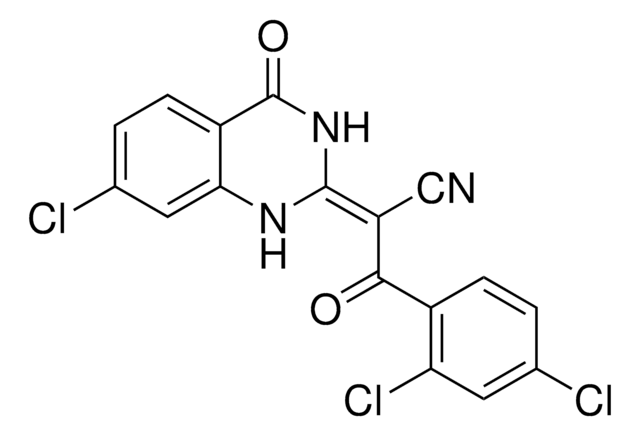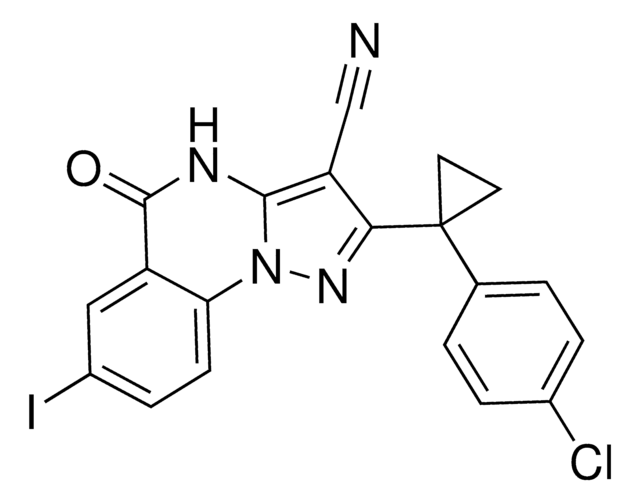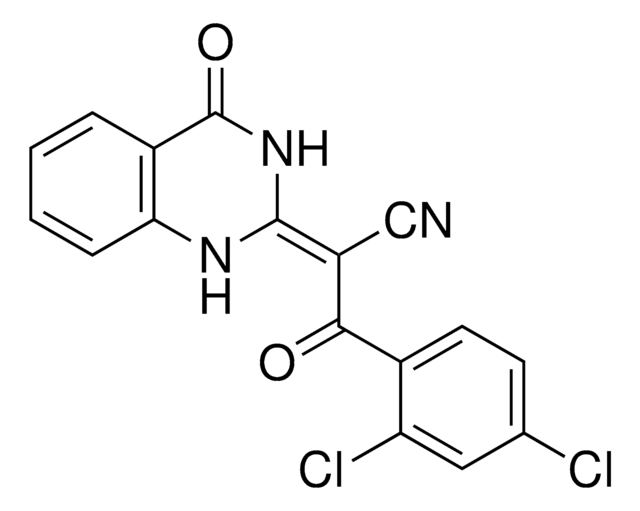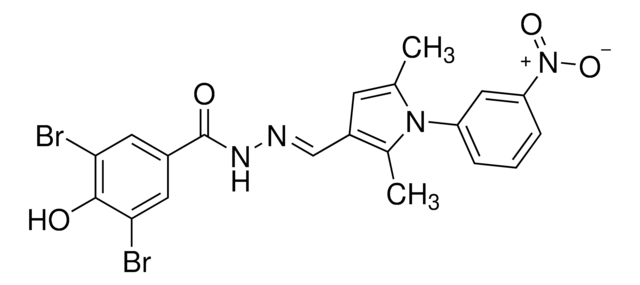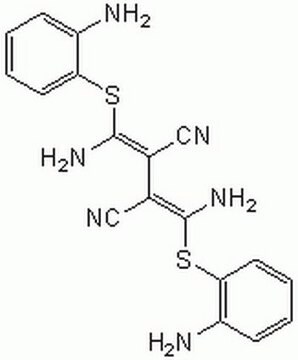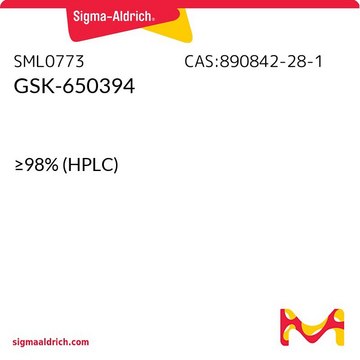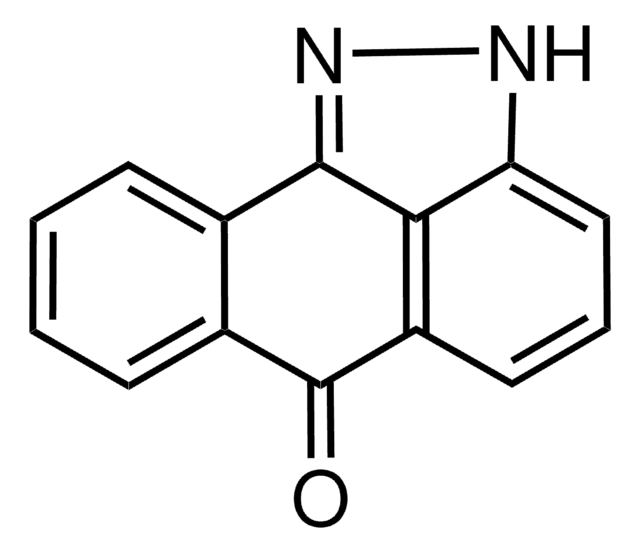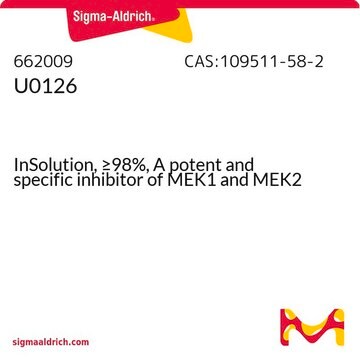SML2332
Dynarrestin
≥98% (HPLC)
Synonym(s):
4-(4-Diethylaminophenyl)-2-(2,4-difluoro-phenylamino)-thiazole-5-carboxylic acid ethyl ester
Sign Into View Organizational & Contract Pricing
All Photos(1)
About This Item
Empirical Formula (Hill Notation):
C22H23F2N3O2S
CAS Number:
Molecular Weight:
431.50
UNSPSC Code:
12352200
NACRES:
NA.77
Recommended Products
Assay
≥98% (HPLC)
form
powder
color
white to brown
solubility
DMSO: 2 mg/mL, clear
storage temp.
2-8°C
SMILES string
CCN(CC)C1=CC=C(C2=C(C(OCC)=O)SC(NC3=C(F)C=C(F)C=C3)=N2)C=C1
Biochem/physiol Actions
Dynarrestin is a potent and selective reversible inhibitor of cytoplasmic dyneins 1 and 2 that inhibits dynein 1-dependent microtubule binding and motility without affecting ATP hydrolysis. It inhibits endosome movement and disturbs mitosis in cells. Dynarrestin inhibits dynein 2-mediated intraflagellar transport of the cargo IFT88 and flux of Smo within cilia. Also it inhibits cancer cells proliferation downstream of Smo.
Dynarrestin is an aminothiazole derivative, which can bind to protein tyrosine phosphatase interacting protein 51 (PTPIP51). This interaction helps in regulating various signaling pathways that lead to proliferation and migration. Dynarrestin blocks hedgehog (Hh)-dependent signaling in mouse and human cells.
Storage Class Code
11 - Combustible Solids
WGK
WGK 3
Flash Point(F)
Not applicable
Flash Point(C)
Not applicable
Choose from one of the most recent versions:
Certificates of Analysis (COA)
Lot/Batch Number
Sorry, we don't have COAs for this product available online at this time.
If you need assistance, please contact Customer Support.
Already Own This Product?
Find documentation for the products that you have recently purchased in the Document Library.
Eric Dietel et al.
PloS one, 14(5), e0216642-e0216642 (2019-05-11)
LDC3/Dynarrestin, an aminothiazole derivative, is a recently developed small molecule, which binds protein tyrosine phosphatase interacting protein 51 (PTPIP51). PTPIP51 interacts with various proteins regulating different signaling pathways leading to proliferation and migration. Her2 positive breast cancer cells (SKBR3) express
Susanne Höing et al.
Cell chemical biology, 25(4), 357-369 (2018-02-06)
Aberrant hedgehog (Hh) signaling contributes to the pathogenesis of multiple cancers. Available inhibitors target Smoothened (Smo), which can acquire mutations causing drug resistance. Thus, compounds that inhibit Hh signaling downstream of Smo are urgently needed. We identified dynarrestin, a novel
Our team of scientists has experience in all areas of research including Life Science, Material Science, Chemical Synthesis, Chromatography, Analytical and many others.
Contact Technical Service